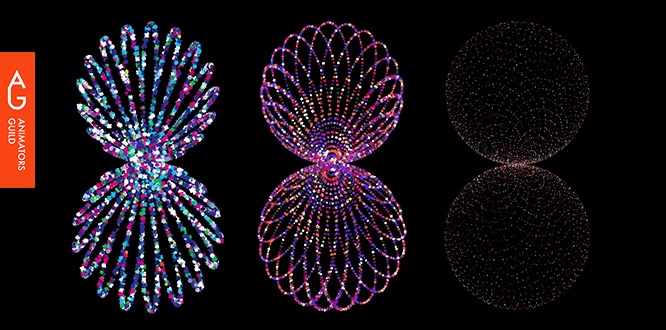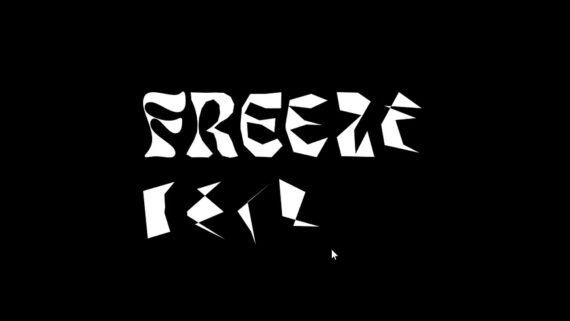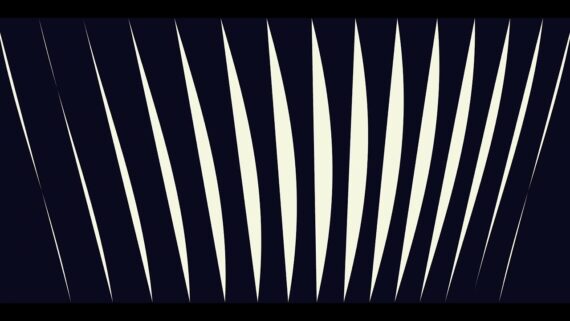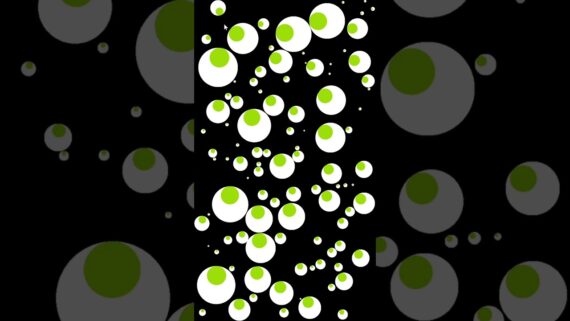Design in Code: A conversation with House of Katha

In the heart of Indore, two creative minds—Srajan and Anusheel—are redefining the boundaries of design through their creative company, House of Katha. Born from a bold pact made by five friends during college—to launch their own design practice within five years—the duo honed their skills in Bengaluru, working at different design firms. While not all friends fulfilled the pact, Srajan and Anusheel remained steadfast. They pooled their savings and launched House of Katha in early 2024, bringing their shared vision to life. With a unique blend of creative coding, branding, and interactive design, they are crafting captivating experiences that seamlessly blend technology, art, and animation.
Srajan's story begins in Gourjhamar, a small village in Madhya Pradesh. Born in 1998, his early years were shaped by a unique blend of influences. His mother's artistic passion ignited his creative spark, while his father instilled a disciplined, entrepreneurial spirit. By the 10th grade, Srajan was already filling his classmates' sketchbooks, demonstrating an innate talent that would eventually blossom into a professional career. A strategic gap year dedicated to preparing for design entrance exams led him to the United Institute of Design (UID), where he pursued Visual Communication.
Srajan later interned with Dr. Subodh Kerkar at the Museum of Goa, completing his graduation project there as well. Srajan's graduation project involved a comprehensive brand refresh of the Museum of Goa. He developed a multilingual typography system, a Goa-inspired color palette, and created over 80 pages of museum guide book—showcasing how design can breathe new life into cultural institutions. He then went on to work with Ether Design and picked up freelance gigs on the side.


Srajan’s Graduation Project; a brand refresh of Museum of Goa
Anusheel's journey is equally compelling. Hailing from Barwaha, a small town in Madhya Pradesh, he represented India at the Asian and Oceanian High School Students' Forum in Japan. His educational path took him through Anubhuti School in Maharashtra and later to the Unitedworld Institute of Design in Gujarat. After his design education Anusheel worked for a couple of years in Bengaluru at TSK Design.

A branding project by Anusheel for a mock brand called Vayu, which sells air in a dystopian future set in the year 2050

The pact that Anusheel and Srajan made along with their college mates to start a studio
Soon, the duo brought their individual skill sets and experiences to the House of Katha. With a growing economy, cleaner air, and proximity to their hometowns, Indore provides the perfect backdrop for their creative endeavors. As they built their portfolio to showcase a diverse range of skills, their experiments in creative coding stood out among their many projects.
Creative coding is a way to generate visuals through code. Just as Illustrator or Photoshop provide various tools for creating graphics, our medium is code
Anusheel's journey into creative coding was sparked by an unexpected source—a documentary( Abstract: The Art of Design) featuring Neri Oxman from MIT Media Lab. This exposure to "poetic computation" opened a world where programming wasn't just about functionality, but about creating living, breathing visual experiences.
Creative coding enables the creation of immersive experiences, window displays, responsive stage graphics, audio-driven visuals, character generators, generative patterns, and math-based visuals. Anusheel says,”Since it involves a dynamic exchange between input and output, we can now use data, sound, body movement, and even facial expressions as inputs to make visuals (the output) interactive and personal.”
With the ability to control every pixel and element on the screen with ease, something that seems to be too ambitious on After Effects can be accomplished within an hour or two using dedicated software like Processing and P5.js.
There are multiple ways creative coding can be integrated into your workflow. You can export files as .jpeg or .png formats and even render each frame of a live visual to later convert into a video. Additionally, you can create assets that are saved as .pdf or .svg files to import into your current design pipeline. It’s incredibly versatile.
With it one can easily create tools that function as micro-softwares design specifically for certain tasks - like Photoshop Actions.
Anusheel says,”With a single click, you can create a tool with creative coding that holds all your brand’s assets—such as colors, typography, etc.—and automatically generates layouts for you. For instance in an event branding project where a designer needs to create multiple speaker posts using a template”
A custom tool could automate this process with just a click of a button! This way, the designer can focus more on brand storytelling and experimentation, rather than repetitive tasks
House of Katha doesn't wait for briefs to spark creativity. They believe experimentation is continuous; likening their process to children randomly sketching in drawing books. Their extensive archive of visual experiments isn't just a repository—it's a living, breathing ecosystem of potential.

Experimentation helps us make those uncanny connections that would have otherwise gone unnoticed.
Experiments by House of Katha
Research is also integral to their process. They maintain comprehensive digital archives—weblinks, image banks, Instagram saves— meticulously categorized for easy retrieval. This systematic approach allows for methodical exploration of new techniques.

Researching new techniques and tools for creative coding
One of their commercial projects that explores the capabilities of creative coding are the visuals for Nicobar’s Chandigarh store launch. Challenged to capture the Indian contemporary essence of the Morocco and Singleton Socials collection, they turned to Perlin Noise (similar to Fractal noise in AfterEffects)- a technique that helped generate a graceful, ever-changing desert landscape. To honour Chandigarh, they crafted a dynamic animation inspired by the city's grid-like design, using circles that evolve and multiply every 10 seconds—symbolizing the growing energy and collective movement of people, transforming a simple visual concept into a vibrant narrative of urban life and celebration.
Fun and lively visuals created by House of Katha depicting Nicobar’s Indian contemporary essence.
As a young company that spends a lot of time experimenting, we either test ideas before committing to them or collaborate with other creative individuals who have the technical expertise. Once we understand how something works, it becomes easier for us to imagine various possibilities for a brief.
For creatives who would like to dip their feet into creative coding, the duo suggests, beginning with p5.js for web-based projects or Processing (a Java-based platform) for desktop applications.
They recommend tutorials by The Coding Train by Daniel Shiffman on YouTube and exploring platforms like The Coding Train website and OpenProcessing, where you can find inspiration and learn from others' projects.
House of Kathas’ upcoming projects hint at an exciting trajectory. They're developing physical kinetic installations, exploring how digital creativity can manifest in tactile, three-dimensional spaces. Drawing inspiration from MC Escher's tessellation methods and origami, they're pushing the boundaries of interactive design.
Explorations by House of Katha
While cautious, they're excited about generative AI and machine learning. Artists like Refik Anadol inspire them, demonstrating how technology can create unprecedented artistic experiences. Currently, they use AI to refine code and develop foundational functionalities.
Anusheel and Srajan see the future of design as inherently interdisciplinary. They anticipate—and are actively working towards a world where boundaries between disciplines blur. Architecture might merge with biotechnology, policy-making with game design, and coding with traditional arts.
More than a design studio, they envision House of Katha as a "third space"—a creative sanctuary where passionate individuals from diverse backgrounds collaborate to tell compelling stories.
On that note, we come to the end of this feature with Anusheel and Srajan from House of Katha. You can reach out to them or check out their latest shenanigans on the channels below.
If you are interested in dipping your feet into creative coding, check out this curation by the House of Katha

House of Katha




